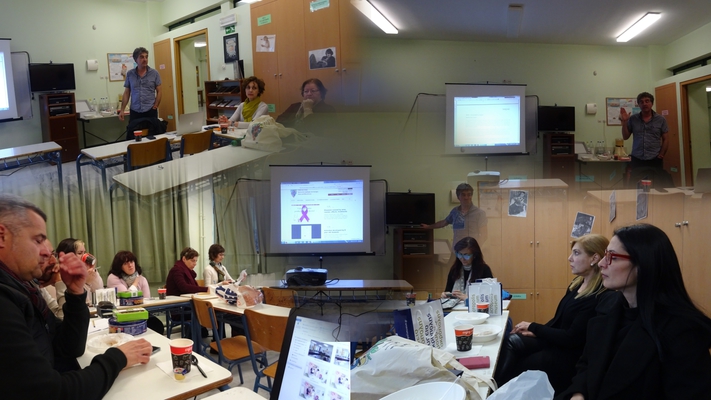The 5th Gymnasium of Chania, Crete hosted the 2nd TPM from 8 to 10 April 2019. Partners from Burgos, Lanzarote (Spain), Livadia (Cyprus) and Athens (Greece) were welcomed and we all took part together in activities and workshops. The guest teachers were also invited to engage with Crete's cultural heritage and discover various aspects of it. We came closer and had a great time together.
Creative touches at the 5th Gymnasium of Chania
A lot of students wishing to honour the partners created drawings, sketches, collages and posters. They were inspired by landmarks and places of interest in Burgos, Teguise, Athens, Larnaca, Paphos and Chania.
Posters with Creative touches created by students
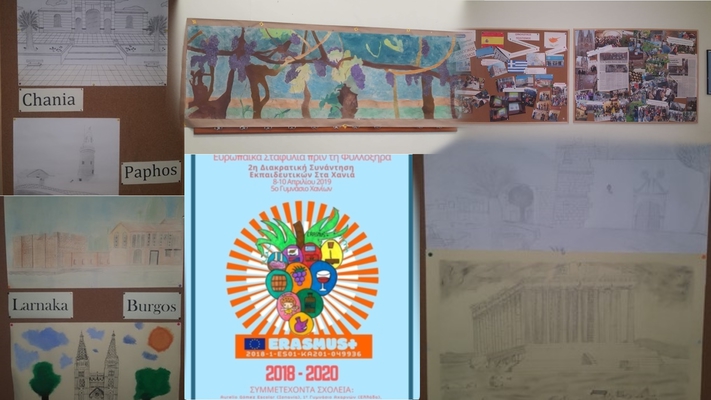
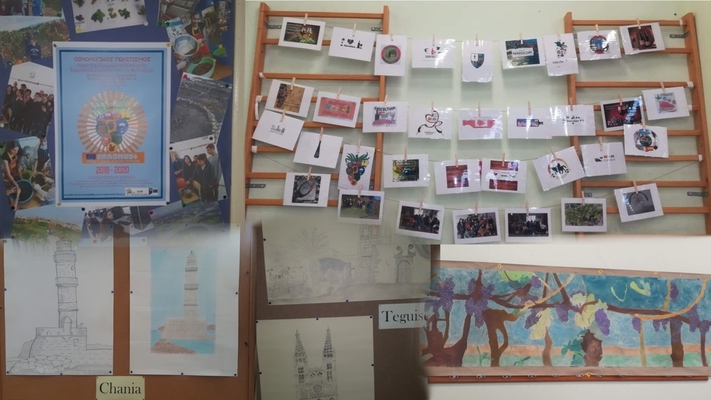
Welcoming the partners at School
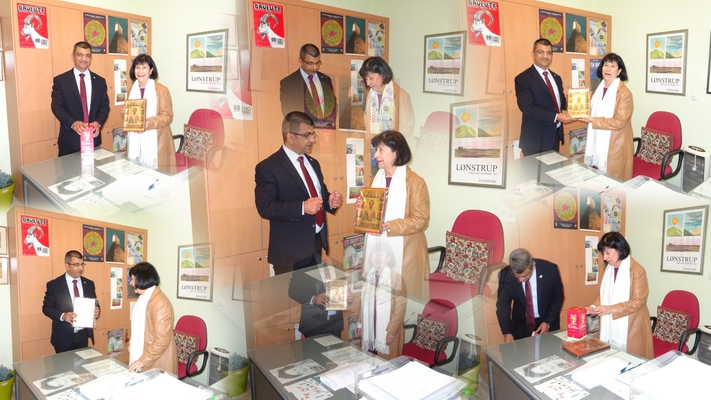
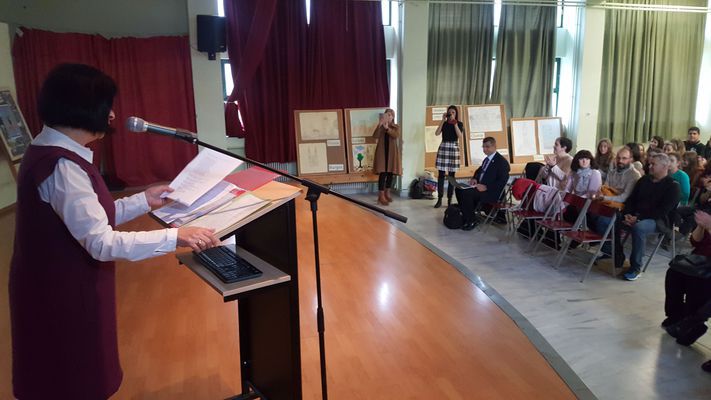
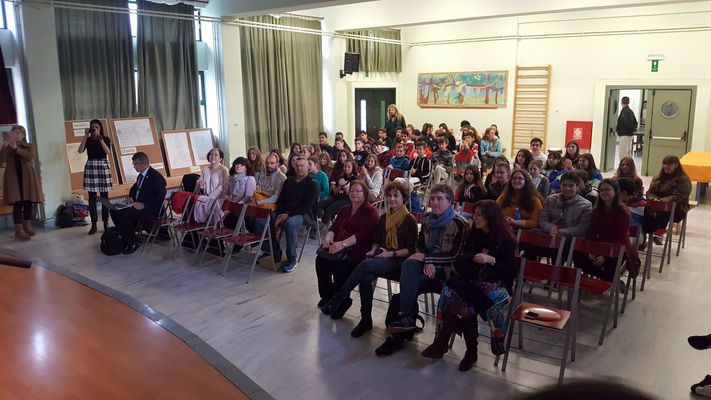
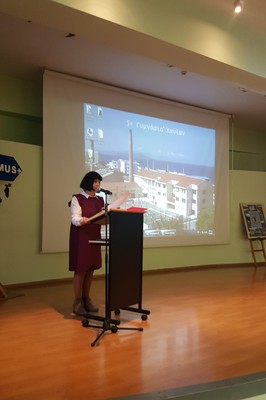
Exchange of good practices
The partners presented a project activity they had implemented with their students and described how students were involved. It was a successful and very informative exchange of good practices.
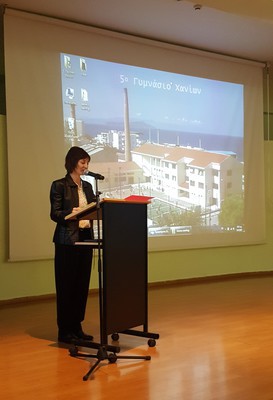
Colegio Aurelio Gómez - Spain Presentation
Click here to watch the video
IES TEGUISE - Lanzarote Presentation
Click here to watch the video
UNIVERSIDAD DE BURGOS - Spain Presentation
Click here to watch the video
Regional Gymnasium of Livadia - Cyprus Presentation
5th Gymnasium of Chania - School Presentation
Poster - Exchange of good practices - Presentations
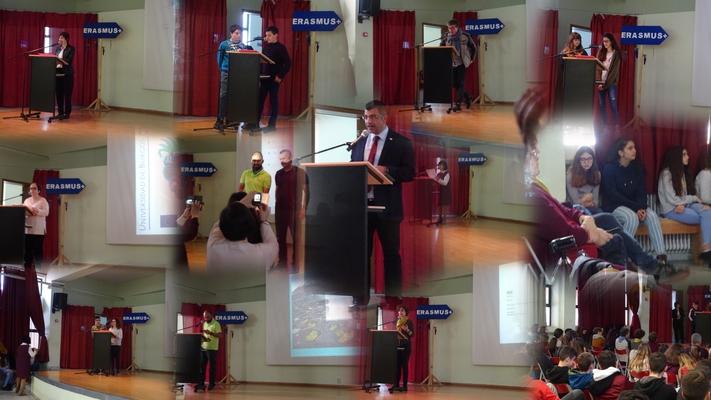
Poster - Exchanging presents
Exchanging presents with the partners was a very enjoyable experience. What a great way to celebrate a partnership with a gift!
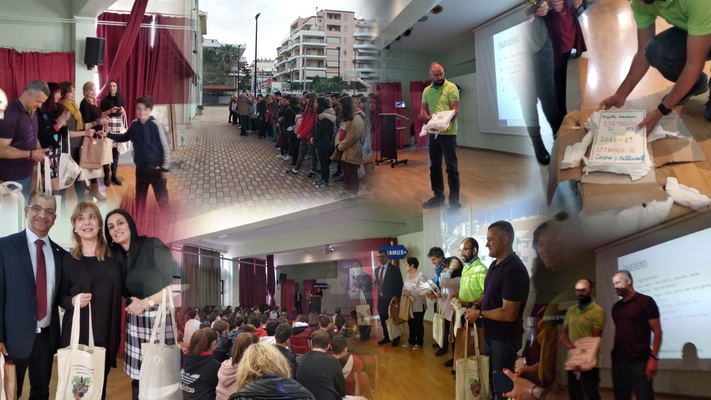
Activity - Cooking workshop (Moustalevria)
The partners attended a cooking workshop to learn how moustalevria (grape must pudding) is made. The teacher who held the workshop explained how this traditional dessert is produced.
Mustalevria (Greek: μουσταλευριά), or Moustokouloura (when cookies), is a traditional Greek kind of pudding made of grape must mixed with flour and boiled until thick.
Moustalevria originated in ancient Greece where it was known under the name oinouta (Greek: οινούτα).
During the Byzantine era it was called mustopita (Greek: μουστόπιτα) or pastellos (Greek: πάστελλος). Nowadays except from its standard name, moustalevria has alternative names that differ from place to place. E.g., it is also known as kefteria in Crete, kourkouta in Samos, palouzes in Cyprus and mustopita in other regions.
Preparation
Moustokouloura
In order to produce mustalevria grape must (the juice from pressed grapes before fermentation and often used as a sweetener in traditional bread recipes, as well as in the preparation of desserts and candy) is boiled in low fire. Then a small amount of argil is added in order to clean the must. After the boil, ingredients like flour, sugar, semolina, petimezi, sesame, vanilla, almonds, walnuts, etc. are included. Mustalevria is a favorite, especially popular at grape harvest season when the must is fresh.
Source: [ wiki ]
Poster - Cooking workshop (Moustalevria)
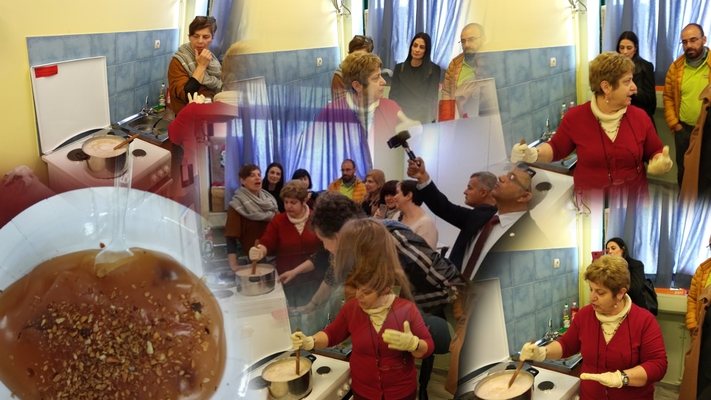
Brunch offered by the School
Guest teachers were treated to a buffet to sample some Cretan appetizers and snacks such as graviera (local cheese, kalitsounia (cretan cheese savouries), fennel pie, local olives, cretan pastries, etc. All dishes were prepared by the students’ families.
Poster - Brunch Cretan Style
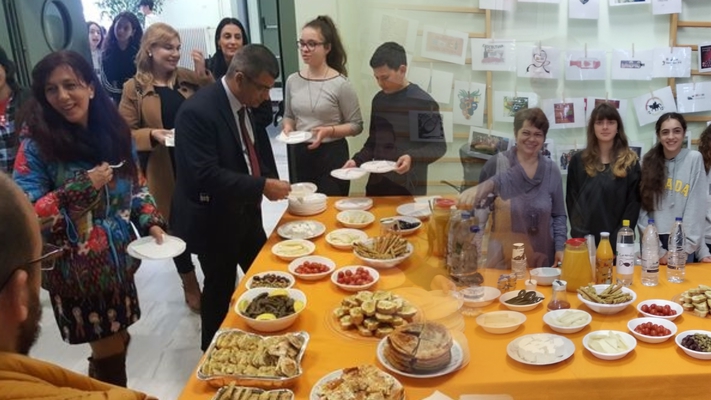
Activity - Exploring, Filming, Documenting the Old Ttown of Chania
Chania (Greek: Χανιά [xaˈɲa] (About this soundlisten); Venetian: Canea; Ottoman Turkish: خانيه, romanized: Hanya) is the second largest city of Crete and the capital of the Chania regional unit. It lies along the north coast of the island, about 70 km (43 mi) west of Rethymno and 145 km (90 mi) west of Heraklion.
Chania is the site of the Minoan settlement the Greeks called Kydonia, the source of the word quince. It appears on Linear B as ku-do-ni-ja. Some notable archaeological evidence for the existence of this Minoan city below some parts of today's Chania was found by excavations[3] in the district of Kasteli in the Old Town. This area appears to have been inhabited since the Neolithic era. The city reemerged after the end of the Minoan period as an important city-state in Classical Greece, one whose domain extended from Chania Bay to the feet of the White Mountains. The first major wave of settlers from mainland Greece was by the Dorian Greeks who came around 1100 BC. Kydonia was constantly at war with other Cretan city-states such as Aptera, Phalasarna and Polyrrinia and was important enough for the Kydonians to be mentioned in Homer's Odyssey (xix.200). In 69 BC, the Roman consul Caecilius Metellus defeated the Cretans and conquered Kydonia to which he granted the privileges of an independent city-state. Kydonia reserved the right to mint its own coins until the 3rd century AD.
Source: [ wiki ]
During this activity students and teachers explored the old town of Chania to learn about the monuments of various civilizations from the stone age to the present day and stroll around the picturesque alleys. Educators from the Environmental Education Centre of Vamos who participated in the programme called ‘A walk in Chania, 5500 years old’ joined us in this activity. Working in groups, students and teachers together with the educators from the Environmental Education Centre of Vamos explored the old town of Chania. Through exploration games with tabs, compasses and other activities, teachers and students sought and found monuments and places of historical interest, which unfolded before their eyes the long history of the town.
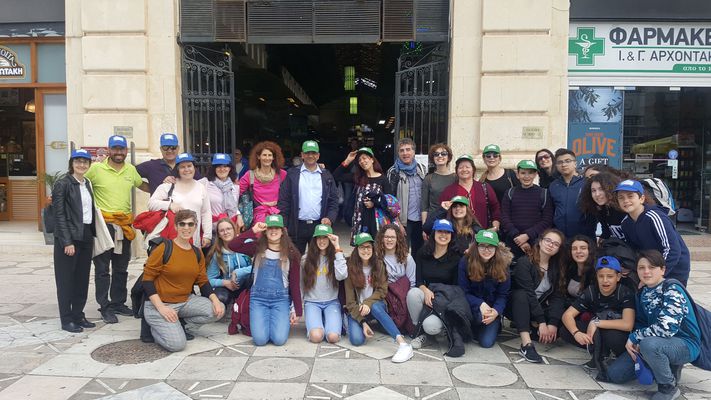
Posters - Exploring, Filming, Documenting the Old Town of Chania
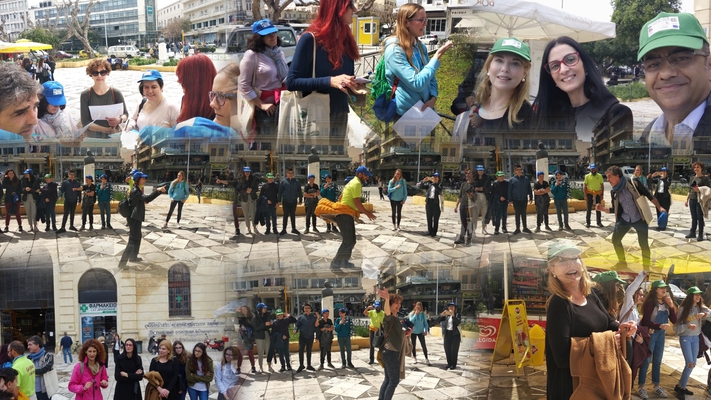
Activity - Exploring, Filming, Documenting the Archaeological Museum of Chania
The Erasmus teachers explored the archaeological museum of Chania and saw a number of exhibits from the Minoan era. The teachers made clay tablets in Linear B script, which is a syllabic script used mainly for administrative purposes.
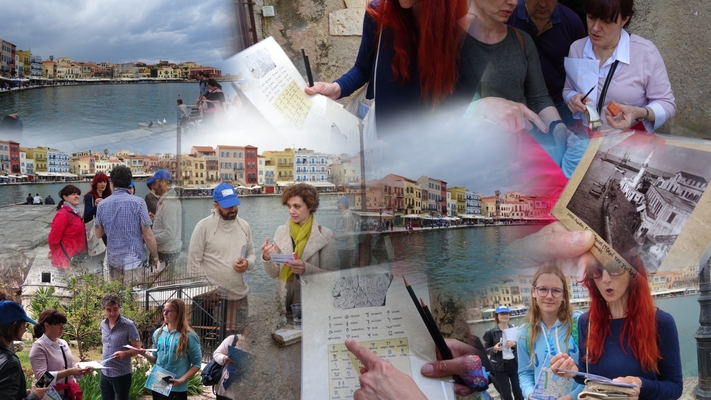
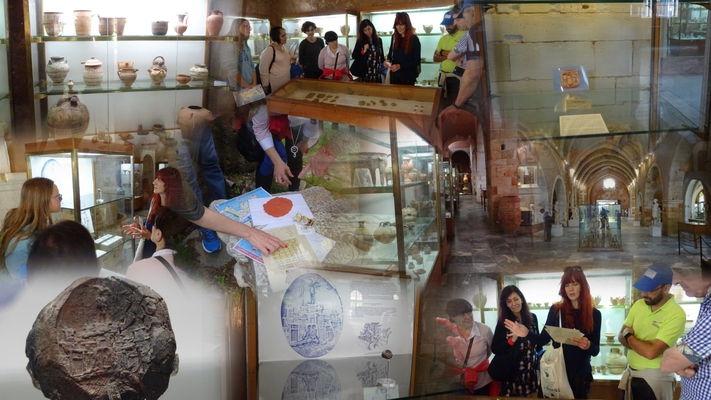
Poster - Lunch at the seafront of the Chania - Cretan Cuisine
Cretan cuisine (Greek: Κρητική κουζίνα) is the traditional cuisine of the Mediterranean island of Crete.
Fresh fruit and dried fruits, pulses, endemic wild herbs and aromatic plants, and rough cereals, whose cultivation was favored by the regional climate, were consumed in great amounts and constituted the base of the Cretan cuisine during that period. Dairy products were consumed on a daily basis in low to moderate quantities. Poultry and fish were consumed on a weekly basis in moderate quantities, whereas red meat was consumed only a few times a month. The main supply of fat was effectuated by olive oil, which was used not only in salads but also in cooking, unlike the northern European countries which primarily used animal fat. Another essential feature of the Cretan cuisine was the moderate use of alcohol, mainly red wine which accompanied meals. Finally, the most common dessert was yogurt and fresh fruits, while traditional pastry based on honey had been consumed a few times a week.
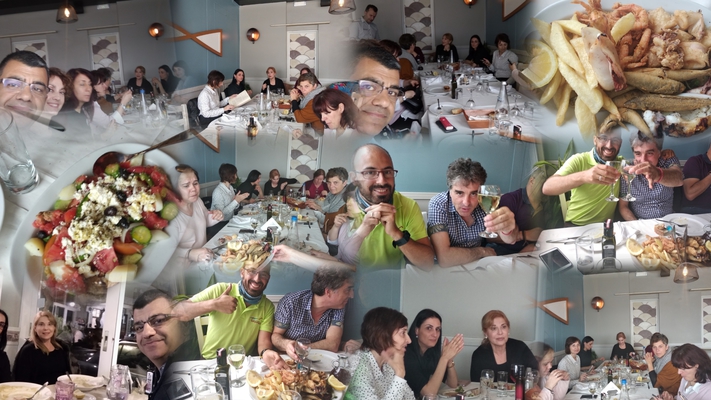
The teachers' meeting
A lot of issues were discussed such as: review of communicative exchanges between students through eΤwinning forums and content of published activities, development of project activities, planning the development of the project blog and Twinspace, evaluation points, etc.
Poster - teachers' meeting
